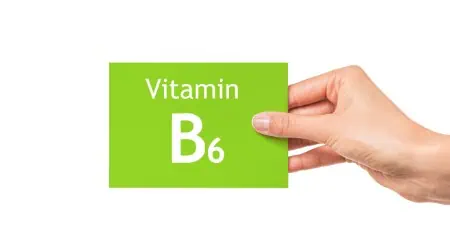
Thank you to my nutrition professor, who first taught me about vitamin B6 (pyridoxine or pyridoxal-5-phosphate) for PMS. It is an effective, reliable treatment for premenstrual mood problems, including PMDD.
Back then (30 years ago), vitamin B6 relieved my own premenstrual symptoms so dramatically that it became my eureka moment in natural health and menstrual health. I realized that although premenstrual mood symptoms are common, they’re not normal. And going forward, I had much higher expectations of what a period should be like.
What causes premenstrual mood symptoms?
Premenstrual mood symptoms are the result of one or more factors, including 1) high histamine or mast cell activation, and 2) high-normal prolactin, 3) iodine deficiency, 4) gut issues, and 5) neurosteroid change sensitivity (progesterone sensitivity).
👉🏽Tip: An over-the-counter antihistamine can relieve premenstrual mood symptoms.
How vitamin B6 relieves premenstrual mood symptoms
Vitamin B6, also called pyridoxine, pyridoxal 5-phosphate, or P5P helps to relieve premenstrual symptoms via several mechanisms:
- It’s involved in the synthesis of steroid hormones, particularly progesterone.
- It’s essential for the manufacture of brain neurotransmitters, including GABA, dopamine, and serotonin.
- It lowers prolactin.
- It promotes anti-inflammatory prostaglandins.
- It assists with healthy estrogen metabolism.
- It reduces histamine, a common cause of PMS.
Vitamin B6 is found in foods such as fish, poultry, and nuts, but you may want to try a supplement.
What dose of vitamin B6?
Take care because long-term use of high-dose vitamin B6 can cause nerve damage. Some clinical trials have used daily doses as high as 200 mg with no problems but, unfortunately, case reports exist of women who experienced nerve damage from only 20 mg of vitamin B6.
For my patients, I usually prescribe B6 in the range of 30 to 60 mg but only during the luteal phase. Taking B6 only some of the time is one way to reduce the risk of vitamin B6 toxicity; another way is to choose pyridoxal-5-phosphate (P5P) rather than pyridoxine.

Other natural treatments for PMS and PMDD:
As I discuss in my summary post about premenstrual mood symptoms, other strategies include:
- Magnesium enhances GABA activity, regulates the stress response, and normalizes the action of progesterone on the central nervous system.
- The herbal medicine vitex or chaste tree has done well in clinical trials for PMS and PMDD. It works by lowering prolactin.
- Keep your gut bacteria healthy so they can do their job of removing estrogen and estrogen metabolites. Healthy gut bacteria also enhance GABA activity.
- Reduce or quit alcohol because it depletes the body of ALLO.
- Try avoiding A1 dairy because it activates mast cells, causes high histamine, and disrupts the GABA receptor.
